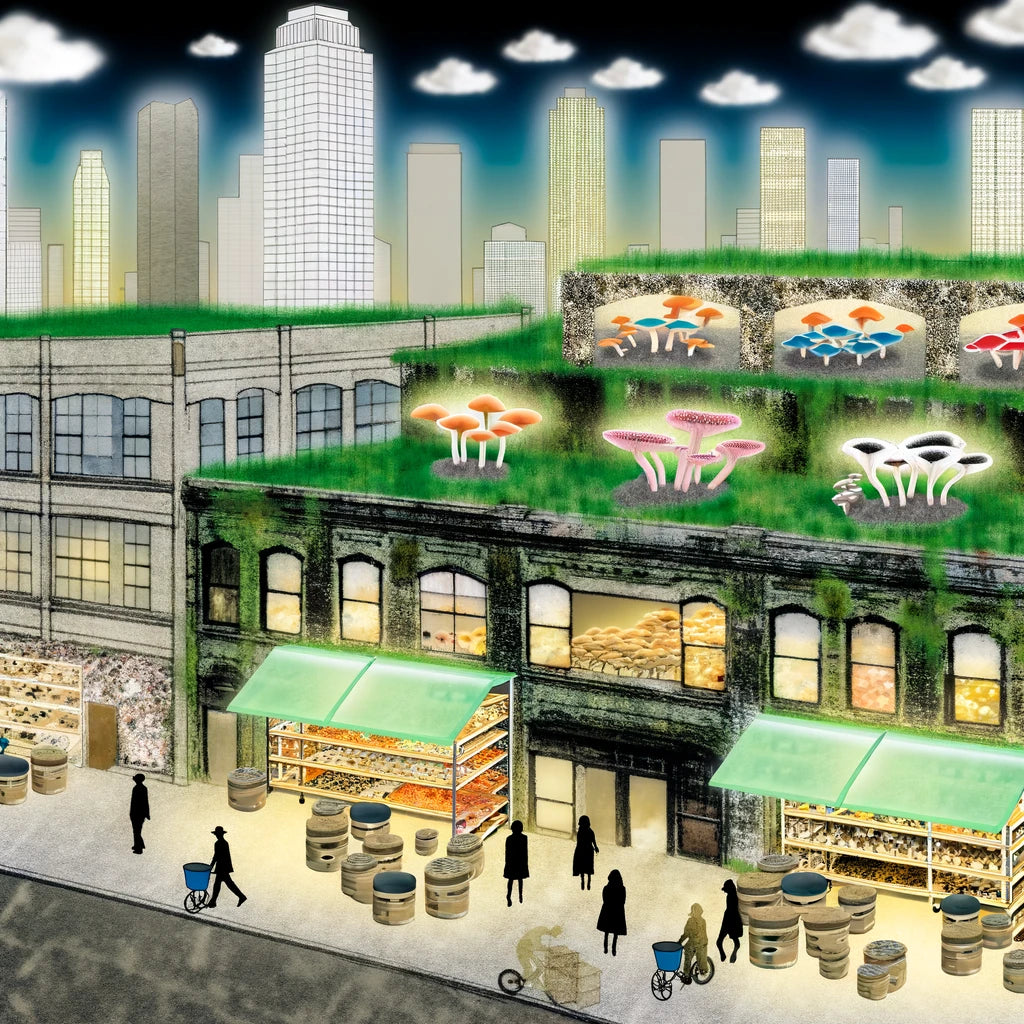In the concrete jungles of the world's cities, an unexpected form of agriculture is taking root. Urban mushroom farming, the practice of cultivating fungi in the heart of cities, is transforming rooftops, basements, and abandoned buildings into lush, productive fungal farms. This innovative approach to urban agriculture is not only providing local, sustainable food options but is also recycling waste, enhancing urban biodiversity, and educating communities about the importance of fungi. This blog post explores the burgeoning world of urban mushroom farming, its benefits, challenges, and the potential it holds for reshaping city landscapes.
The Benefits of Urban Mushroom Farming
-
Local Food Production: Urban mushroom farms are bringing food production closer to consumers, reducing the carbon footprint associated with transportation and providing cities with fresh, nutritious produce. Mushrooms such as oyster, shiitake, and lion's mane are popular choices for urban cultivators due to their adaptability and nutritional value.
-
Waste Recycling: One of the most compelling aspects of urban mushroom farming is its ability to recycle organic waste. Coffee grounds, spent grain from breweries, and agricultural by-products can all serve as substrates for mushroom cultivation. This not only reduces waste sent to landfills but also turns it into valuable food.
-
Enhancing Urban Biodiversity: By introducing mushroom cultivation to city environments, urban farms contribute to biodiversity, supporting a range of organisms that interact with fungi. This addition to urban ecosystems can help mitigate the effects of pollution and urban heat islands.
Challenges and Opportunities
While urban mushroom farming presents a promising avenue for sustainable urban development, it also faces its share of challenges:
-
Space Constraints: Finding suitable spaces for cultivation in densely packed cities can be difficult. Innovative solutions, such as vertical farming and utilizing unused buildings, are key to overcoming this challenge. However at the same time, mushroom farming is perfect for urban farming because it takes up much less space than other types of farming.
-
Environmental Control: Maintaining the right conditions for mushroom growth (humidity, temperature, and light) can be more challenging in an urban setting. However, advancements in farming technologies and techniques are making it increasingly feasible.
-
Community Engagement: Educating the public about the benefits of mushrooms and urban farming is crucial for the success of urban mycology projects. Workshops, farm tours, and community programs can play a significant role in garnering support and participation. This is because mushrooms have a lot of myths behind it still and outreach and education on the wonders of mushroom can help get the community more buy-in for these community mushroom farming programs.
Spotlight on Success
Cities around the globe are witnessing the success of urban mushroom farms. From small-scale operations in residential basements to large ventures on commercial rooftops, these projects are proving that urban environments can be fertile ground for fungal cultivation. Success stories often highlight the community benefits of such initiatives, including job creation, education, and improved access to healthy food.
Conclusion
Urban mushroom farming is at the forefront of a movement towards more sustainable, resilient, and local food systems in cities. By embracing the cultivation of fungi, urban areas can address waste management issues, enhance food security, and increase biodiversity, all while fostering a sense of community and connection to nature. As this innovative approach to agriculture continues to grow, it has the potential to significantly alter the landscape of urban food production, proving that even in the heart of the city, there's room for the fungi kingdom to thrive.
